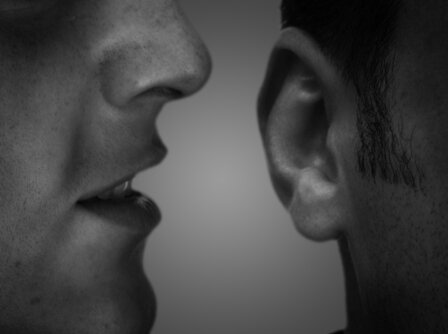Top 10 Medical Emergency Techniques you Should Know
Suggested by SMSThe problem with emergencies is that they catch us unaware, yet they require us to take immediate action to deal with them. We have gotten so used to being able to call for help that few of us take into account that there may be situations where even emergency service personnel may not respond fast enough to help. What would happen if you or your loved ones were seriously injured but you did not have cell phone service at the time – would you know what to do? For that very reason, we discuss some medical emergency techniques you should know. While they may not necessarily get a person out of danger, some of them can be the difference between life and death.
1. Heimlich Maneuver (Abdominal Thrust)
When someone starts choking, it should come as no surprise to anyone that they may start panicking. This is the reason why it is important that you stay calm, and know that you can help someone who is choking on a dislodged piece of food or other item. The Heimlich maneuver provides an increase in pressure in both the chest and abdomen, this sudden increase in pressure can lead to the object being pushed out of the person’s throat.
If you ever have the opportunity to take a class in the Heimlich maneuver, it is a great thing to do. Most people are going to be understandably nervous when someone starts choking before their very eyes. In such a situation, it will be beneficial that you have hands-on training.
2. Learn to Perform a Tracheotomy
It can be a scary sight to see someone choke. If you have attempted the Heimlich maneuver and the person is still not able to breathe properly, (medical experts recommend that you try the Heimlich maneuver three times before moving onto this next step) a Tracheotomy may be necessary to help them breathe and thus save their life.
Before you continue you are going to need a knife and something similar to a tube (a ballpoint pen works, as does a soda straw). Preferably, you would sterilize the knife with fire before you proceed. A Tracheotomy involves making an incision (from top to bottom) in the soft spot of the throat. This provides access to the airways and allows the person to breathe again circumventing whatever is hindering their ability to breathe. While it may be a scary notion to make an incision in someone’s throat, not doing so can lead to a person choking in front of you.
3. Learn to Treat a Serious Burn
It is true that burns can be a very common household injury, and a small or minor burn is going to sting a while but it is going to heal on its own. However, severe burns not only require special care because of the possibility of severe scarring, but also to reduce the chances of infection. Here are some steps you have to take if you are dealing with a more severe burn.
- Even though it seems counter intuitive to what you want to do, never take the clothes off a burnt body part. In the worst-case scenario, the clothes are stuck to the skin and this is going to add bleeding to the already bad burn.
- Make sure you only use pure and cool water, and if that is not available, you can use a saline solution should you have it. Creams, lotions, or butter should never be used to treat a serious burn.
- First instincts are going to be to help the person as soon as possible, but it is important that you wash your hands before you do anything to limit the risk of infection, which could lead to far more complications than just the burn itself. If possible, wear plastic gloves that have not been used.
4. Learn Fireman’s Carry
Sometimes it is vital that you get someone out of a certain situation immediately, but the person is either unconscious or otherwise incapacitated. In that situation, the Fireman’s Carry can be used to get someone away from their current location. The importance of knowing the Fireman’s Carry comes from the fact that it makes it much easier to carry someone (because you are distributing their weight across your shoulders) and it also stabilizes the person you are carrying, thus reducing any potential for further aggravating or adding additional injury.
Because you are able to distribute the weight more evenly, there is less chance that you are going to become tired as quickly and people have been known to transport others 50 feet or more which should be enough to get them out of harm’s way. Without learning the Fireman’s Carry, you risk the possibility of further injuring the other person by dragging them, or may simply not have enough strength to bring them to safety.
5. Learn to Perform CPR
Even if you have been CPR certified in the past, a refresher course is always a good idea because the American Heart Association made some rather drastic changes to their recommended CPR process in 2010. The major change is that research established that just applying the compression technique of CPR without the mouth-to-mouth breathing works just as well as the previous method. Before you do anything though, it is important to get qualified medical personal on the scene as quickly as possible to provide aid.
As discussed earlier, the American Heart Association identified that chest compressions are more important to correcting abnormal heart rhythms. The 30 chest compressions that are recommended should only take about 18 seconds, this is why rescue breathing and airway opening are not significantly delayed by focusing solely on chest compressions.
- Always place your ring finger on top of the nipple of the person (this reduces the likelihood of you breaking one or more ribs)
- Get hands-on training, when someone is lying motionless before you, it can be a scary situation. Having done the training beforehand allows you to revert to basics.
- If you do compressions, do them at a rate of at least 100 compressions per minute
6. Treating a Puncture Wound
Most people know what a puncture wound is, and if you do not, they are easy to identify. The problem with puncture wounds is that they can be quite deep, yet narrow. Especially if there was quite a bit of force that drove the object into the skin. Nevertheless, puncture wounds are not the same as cuts or scrapes; they require you to act a bit differently.
- Your first instinct is going to be to remove the object, but if the object is larger than about half an inch, you are going to want a professional to remove it for you. This not only reduces the chances of permanent damage, but also limits the chances of increased bleeding. In fact, if there is major bleeding, the object itself may be the only thing that is blocking more extensive bleeding.
- Make sure that the wound is clean, that means no additional pieces of fragments left. This is important when it comes to staying one step ahead of infection.
- Let the wound bleed a few minutes, it seems like the exact opposite of what you would want to do, especially if you are dealing with a loved one, but the bleeding actually cleanses the wound.
7. Treating a Concussion
A concussion happens when the brain is literally shaken between the space of the skull and our brain. For most people a concussion does not have lasting effects, unless they are not treated properly in which case it can become a serious problem over time. Because concussions can happen with even minor blows to the head, it is a good idea to know what to do in a situation where you believe another person may suffer from a concussion.
One of the first things to do is see whether the person suffers from two or more of the following: sensitivity to light, a severe headache, blurred or double vision, loss of consciousness after the trauma to the head, vertigo, loss of balance and coordination, numbness, tingling or weakness in the extremities, vomiting, and nausea. If they suffer from two or more, it is safe to assume the person is suffering from a concussion.
- If you believe they are suffering from a concussion, seek medical attention.
- do not use aspirin or anti-inflammatory drugs in case there is internal bleeding.
- If the person wishes to sleep, wake them up every 15 minutes for the first two hours, then every half hour for the following two hours. While it may be annoying, both to you and the patient, it is an important step to take.
- Ask simple questions, this not only provides a clear example of whether the person still has their wits about them, but also keeps them awake.
8. Treat a Broken Bone
Whether you have broken or fractured a bone, it is going to need immediate medical attention. Nevertheless, there are few things you can do to prevent further injury and keep the person comfortable until emergency personnel arrives.
- Make sure you immobilize the area of the broken bone. Whatever you do, unless circulation is cut off, do not try to move it back to the original position. Not only can the pain cause the person to go into shock, but it can also cause further damage.
- If a person has a neck, back, pelvis or hips fracture do not to move them. If you have no choice but to move them because of imminent danger, make sure you immobilize the affected area so there is no chance of further damage.
- You can splint the affected bone by tying it to a stiff object such as a stick or board. Make sure you secure this splint on both sides, but not directly on top of the broken bone.
- If a person has broken their hand, wrist, finger or foot, remove all jewelry from that area, it can become virtually impossible to do this afterwards once swelling has occurred.
9. Treat Poisoning
First Aid Treatment for Poisoning — powered by ehow
Thousands of people each year die because of unintentional poisoning, this has nothing to do with poisons or chemicals, but with products you can find around the home. With a fast response and good assistance, you can prevent someone from dying. It is important to know the following.
- If possible, find out what may have poisoned the person. Make sure you have the bottle or container with you when you call emergency services, this makes it easier to answer any potential questions
- Realize that poison is not just the cartoon version of a glass bottle with a skull and crossbones on it, it can be gas, vapor fumes, liquid, solid, or gas.
- If you believe the source is located in the victims mouth in solid form, for example in case of pills, make sure you place your fingers in a clean cloth or put on gloves, and remove any residue that may still be in the mouth
- If the poison was corrosive, flush the affected area with water for 30 minutes. Doing this does not mean you should not still call poison control.
- If the poison has entered the person’s eyes, make sure you flush the eyes with water. Do not use cold or warm water, use lukewarm water for at least 15 minutes. Even though it will seem natural to them, instruct them not to rub their eyes.
10. Treat Severe Bleeding
Severe bleeding is quite different from the regular cuts and scrapes you may have encountered before, and requires much different treatment. Some of the signs of severe bleeding are that the wound is not clotting and that blood sprays or gushes from the wound. If you are putting pressure on the wound for several minutes and this does not stop the bleeding, it should be considered severe bleeding. In that case, immediately call emergency services. The most important thing to do in the case of severe bleeding is to try and prevent the bleeding as much as possible by keeping pressure on the wound, if you do not, the person risks losing too much blood. This can lead to them becoming unconscious or even passing away.









